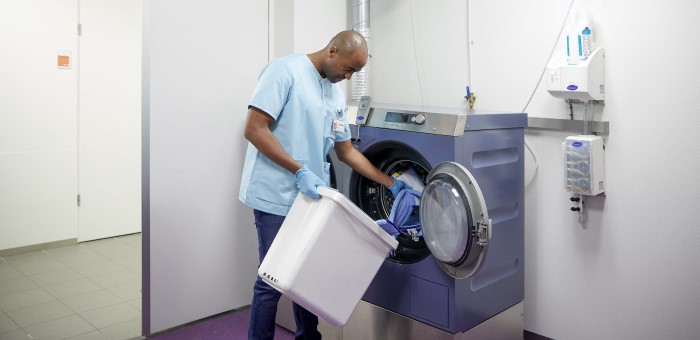This is the first article of a series of 5 blogs dedicated to the Total Cost of Ownership in professional laundry.
In this post, we will explain what TCO is and how it impacts cleaning and laundry operations for Hospitality and Long Term Care businesses.
TCO (Total Cost of Ownership) is the overall cost of a product or service throughout its life cycle. This calculation method takes into account both direct and indirect costs.
Knowing this total cost of ownership provides an additional opportunity for value creation. This TCO can be reflected in the value created in the service, product, or production of these both.
Over the last few years, businesses have gone through dramatic changes in their working parameters and cost and profitability have become very challenging areas for most. The COVID-19 Pandemic has made a difficult situation even worse. More recently, the global raw materials sourcing & logistics issues, the ever-increasing cost of energy & labor, the global warming crisis, severe staff shortages, and the highest levels of inflation in Europe since the 1990s, have crippled businesses in certain sectors- especially Hospitality and Long Term Care.
In both these sectors, Housekeeping, and Laundry (along with heating/cooling of a facility) make up almost 30%-40% of the operational cost structure and therefore play a crucial role in the profitability of the business.
In 2022-23 with increased energy costs and increased costs of all in-bought services and consumables, it is time to look at where businesses spend their money and to think about where and how we can make savings and do things better and more sustainably.

Another huge issue, not just for individuals & businesses, but on a macro global level is sustainability. Climate change & global warming is at the forefront of every country's agenda, with most countries making commitments or trying to be Carbon neutral by around 2030- that is only 7 years from now- which means we need to accelerate action now.
We need to start thinking about doing things smarter. What can we do to minimize waste in its all formats: material, waste streams including carbon emissions, wastewater, lost energy, using less energy in logistics & transport, using & wasting less material, or shortening cycles and times...
Can we minimize the use of fossil energy, less fresh water, and materials?
Making small changes in how we do things could have a massive impact on the sustainability and environmental footprint of a business, and at the same time provide significant financial benefits as well, making a positive contribution to society including our customers, staff, and planet.
Now that we have talked about WHY we need to make changes, let's move our attention to WHAT we can start doing to get there:
Using the above steps 1 and 2 could quickly give us savings of around 5% to 10%.
However, if we really want to make a big difference and bring in savings of between 20%-50%, we would need to change our thinking, our ways of working, and the processes involved. This new way of working is what Diversey calls the TCO method- Total Cost of Ownership.
This TCO approach is a culmination of over 25 years of knowledge and expertise in the cleaning and hygiene industry, combined with our latest technology and innovations to significantly improve our customers' profitability and sustainability.
In this series of blogs, we will advise and guide you on how Diversey can help you in this in your journey.
Next blogs to be published:
Welcome onboard!